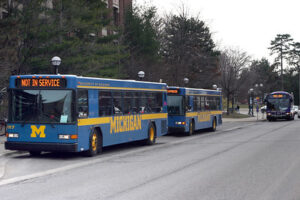Following the release of the latest college enrollment data, there’s a lot of speculation about why enrollment continues to sink. Almost invariably, the issue of cost arises. College is so expensive, the reasoning goes, that students either drop out or don’t enroll.
University education is expensive. Very expensive. But if cost were the problem, would-be students should be flocking to community colleges in droves.
They’re not.
The cost of something is always an issue at some level. So, it’s not fair to say that cost has no role in attendance decisions. It just doesn’t account for the drop in enrollment figures nationally.
The issue is one of value. What is the value of a college degree? Most universities have suffered some kind of enrollment losses. The University of Michigan is among that rarefied group of universities where discussions of enrollment declines are mostly academic. The reason is the perceived value of a Michigan degree. Michigan will not experience declining enrollment as long as it maintains the perception of value.
So, what does it mean when your enrollment declines, despite increasing financial aid or even entirely free attendance? It means your would-be students perceive less value in attending your institution than you do. They perceive that sitting in your classrooms will not meaningfully augment the value of their time and/or labor. It means they believe they can make as much or more than they could with one of your degrees. When your institution does not return value that exceeds its cost, students do not have a reason to enroll.
Pair enrollment data with outcomes data
The economic data on the earning potential of community college alumni bear this out. On average, US community college graduates earn about as much as a worker with a high school diploma after 10 years. While a community college graduate may start out making more, after a decade, the value of a two-year degree is exhausted.
If a person enters a community college immediately following high school, this 10-year period comes to an end when that person is in their late-20’s. That’s the time at which people are getting married and having children. It is the precise moment they can least afford to have a valueless credential. (Especially one they may have borrowed money to acquire.)
So, if you want your enrollment to rise, start putting value back into your degrees. Upgrade your academic programs to include higher-wage career options. Get rid of academic programs that commit graduates to poverty. Focus on associate’s degrees, because more is better. Throw in some flexibility on class scheduling and attendance. Provide support like tutoring, childcare, mentoring, transportation subsidies, health care and mental health care, and career counseling. Help students fill out the FAFSA.
Or you could vastly expand your institution’s executive roster and divert federal COVID-19 relief dollars to cover operating losses on a health club that you probably shouldn’t be running in the first place.
Photo Credit: College of Arts and Sciences U of L, via Flickr

























